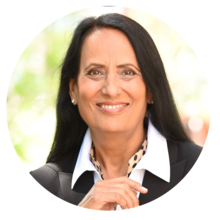About this Presentation
Organizations struggle to see and run their businesses holistically, producing much lower results than are possible as a result. In our efforts to provide measures and methods to hold people accountable and motivate them to make better decisions and to do more we often stumble into creating local/ departmental incentives that cause the parts of the organization to work against each other. (plenty of examples here of course). TOC has articulated this extremely well and highlighted the issue far better than virtually any other approach. We know that we want to create measures and incentives that promote dong what is best for the organization as a whole, but just how we do this and take it down to everyone in the business is not so easy nor clear. Providing better measurements helps and TOC has certainly moved companies further along this path. But significant gaps remain and with them opportunity to push results much higher without much additional effort. Not to mention that the vestiges of local thinking remain and must be constantly battled against. This talk will explore additional steps that can be taken to bring more people to understand, see and take better decisions and actions to grow the bottom line. It builds on the fundamental truth that people are good, and want to be part of a “winning team,” but they lack the understanding, incentives and means to do a better job of contributing. The task of changing this rests solely on the shoulders of management who are the only ones in a position to provide the direction and clarity needed. We will share strategies based on the five focusing steps for creating a much clearer picture to guide decision making at all levels of the business, along with additional incentives which further aid people in contributing much more to the bottom line performance of the organization. We’ll share case studies and real examples to illustrate the use and effectiveness of the concepts.
What Will You Learn
To help you get the most value from this session, we’ve highlighted a few key points. These takeaways capture the main ideas and practical insights from the presentation, making it easier for you to review, reflect, and apply what you’ve learned.

Instructor(s)
Jennifer Eckman

Ms Alka Wadhwa
Alka Wadhwa is an experienced consultant and process improvement expert with over 24 years of expertise in the Theory of Constraints (TOC), Lean Six Sigma, and organizational performance optimization. She has successfully led projects in healthcare, financial services, and manufacturing, driving significant improvements such as a 67% boost in hospital operations and a 140% increase in outpatient visits.
Previously, Alka Wadhwa spent 17+ years at GE Global Research Center, where she led initiatives to enhance various GE businesses through advanced technologies, process redesign, and system optimization. Founder of Better Solutions Consulting, LLC, she specializes in using TOC, Six Sigma, and data analytics to streamline operations and build high-performance teams.
Her work has earned her multiple accolades, including the Empire State Award of Excellence in healthcare.

Dr Gary Wadhwa
Dr. Gary Wadhwa is a Board Certified Oral & Maxillofacial Surgeon with extensive experience in the field. He completed his Oral & Maxillofacial Surgery training at Montefiore Hospital, Albert Einstein College of Medicine in Bronx, NY, and has served as an Attending at prestigious institutions like St. Peters Hospitals, Ellis Hospital, and Beth Israel Hospital in NY. With a career spanning over two decades, he was the former CEO and President of a group specialty practice in NY from 1994 to 2015. Dr. Wadhwa holds an MBA from UT at Knoxville, TN, and has undergone additional training in System Dynamics at MIT, Health System Management at Harvard Business School, and Entrepreneurship and healthcare innovations at Columbia Business School. Committed to expanding access to Oral & Maxillofacial Surgery care, he is currently engaged in a meaningful project to provide healthcare services to underserved populations in inner city and rural areas through non-profit Community Health Centers.
